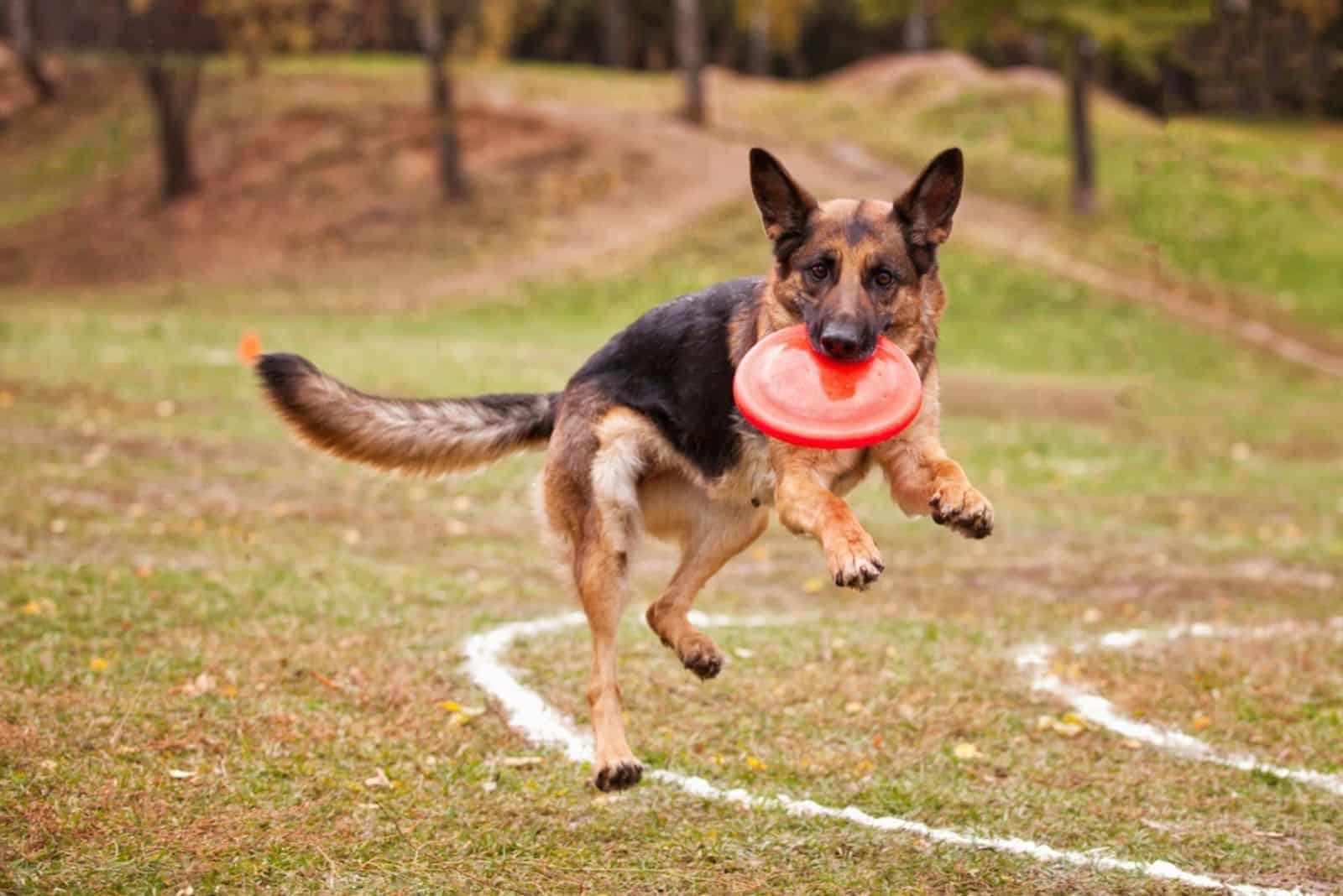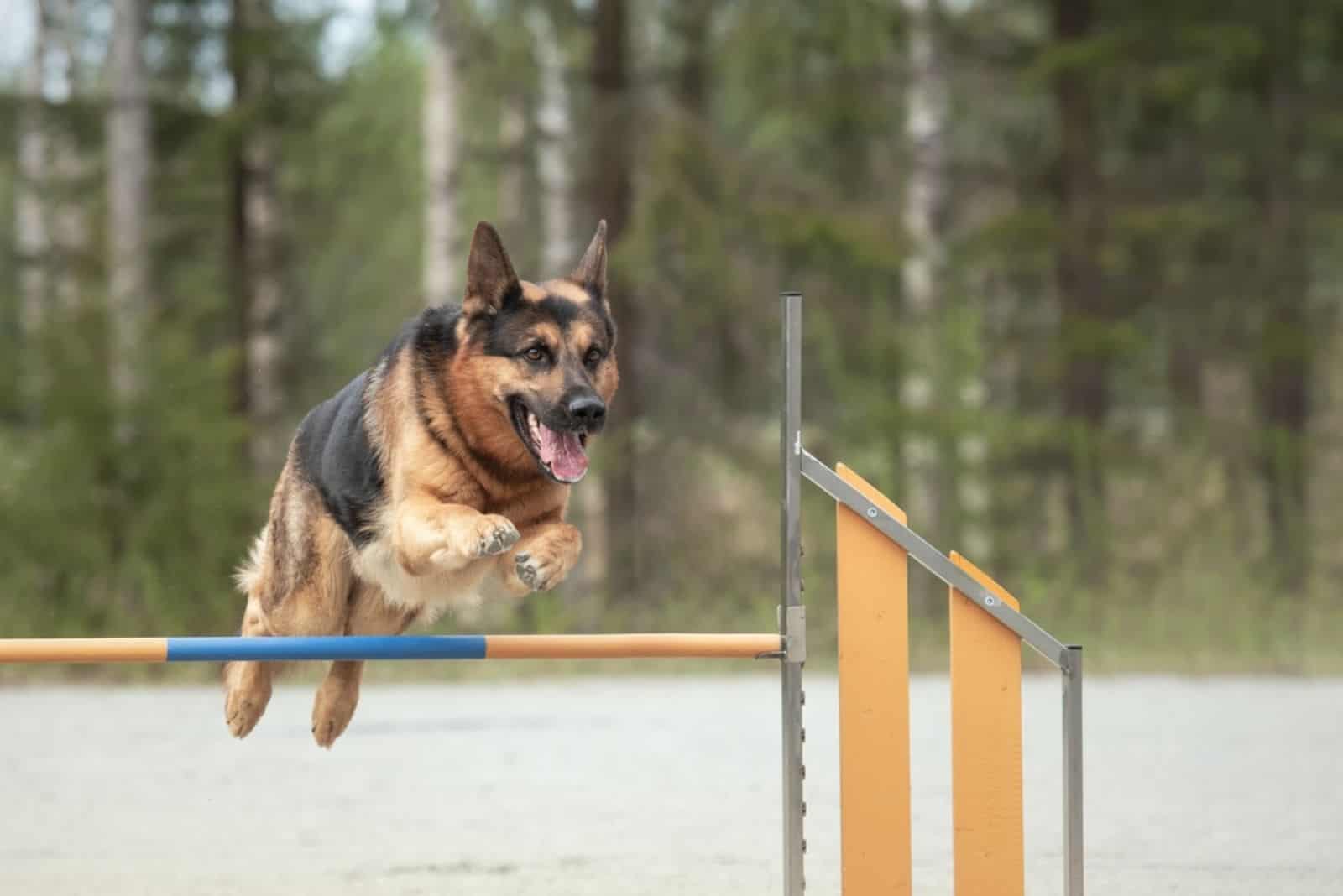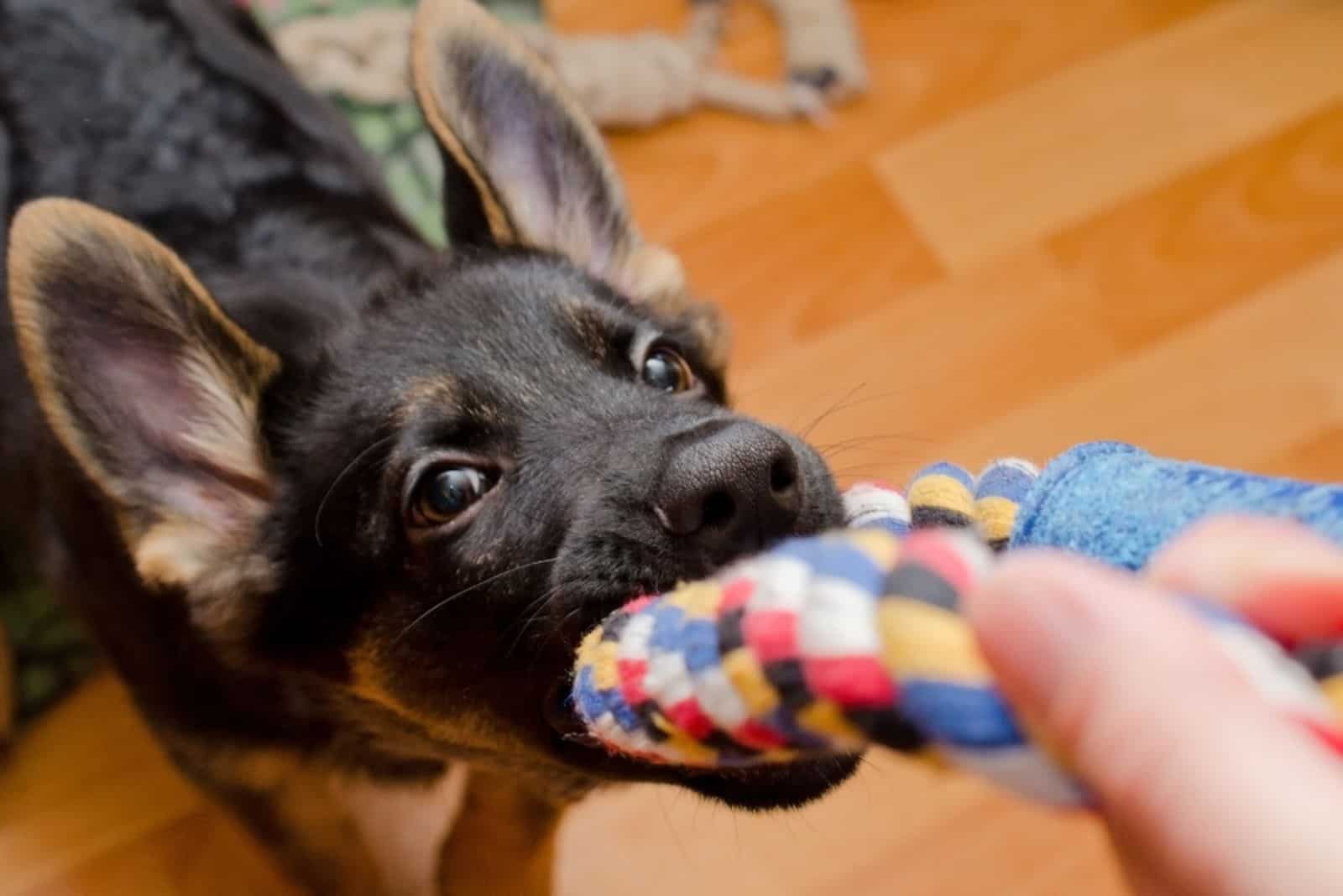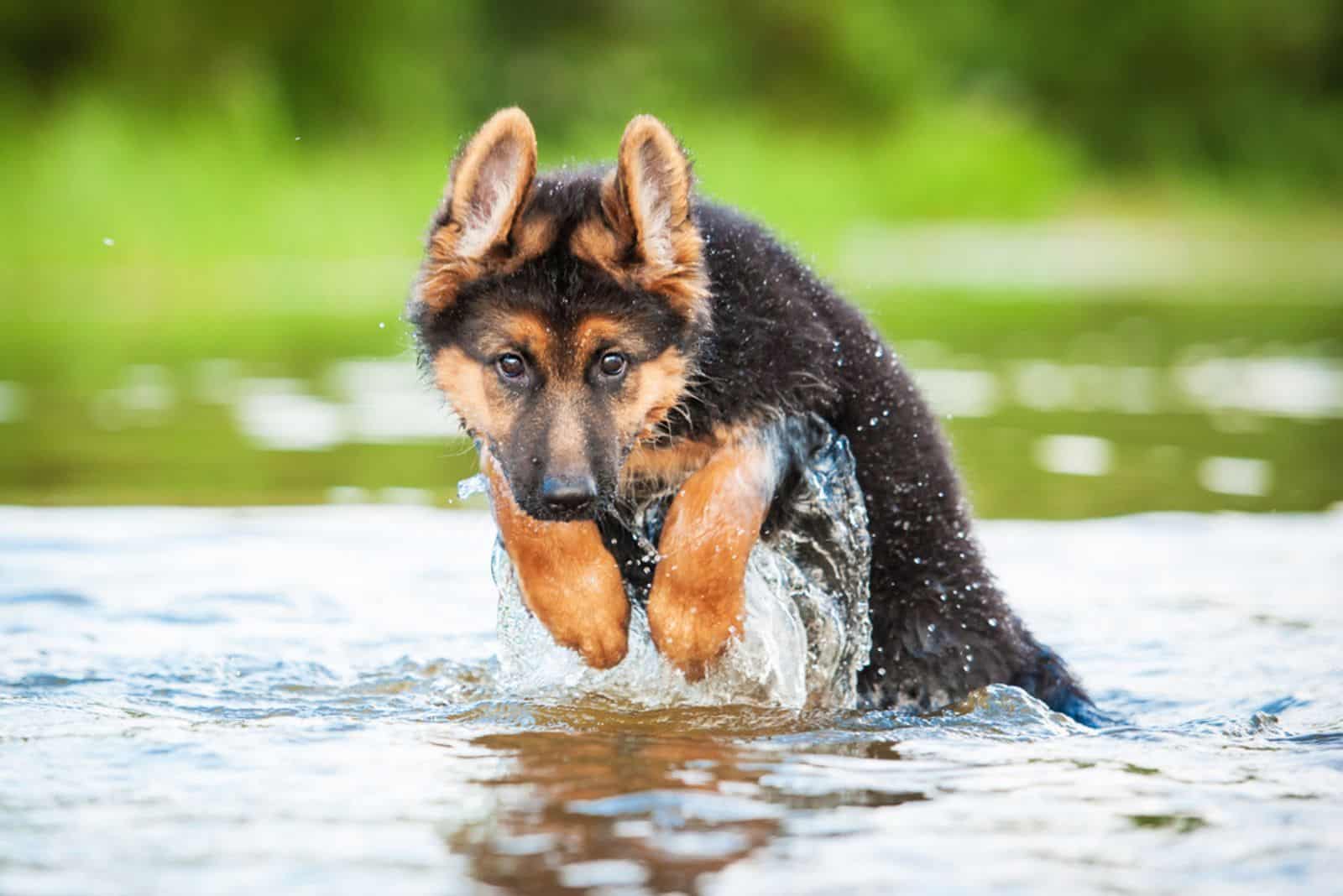German Shepherds are lively, energetic, and athletic dogs that need plenty of exercise to stay healthy and happy.
Now that you’re here, you’re probably always on the lookout for fun and exciting ways to keep your furry pal entertained.
That’s why we’ve put together this list of 5 creative ways to exercise your German Shepherd. From hiking to agility training, swimming to tug of war, these exercises are sure to get your pup’s tail wagging!
#1 Play Fetch With A Frisbee Or Ball

All paw lovers are aware of the fact that German Shepherds are very athletic dogs and playing fetch is one of the best ways to help them burn off that energy.
These dogs can run like the wind, jump like a pro, and have a blast playing with their favorite human.
But what makes playing fetch even more exciting for German Shepherds is their strong prey drive. They love chasing after balls and frisbees because it’s an instinctive behavior that satisfies their need to hunt and capture prey.
So, grab a frisbee or ball, head to the park or your backyard, and watch your doggo take off like a rocket! You’ll be amazed at how fast they can run and how high they can jump!
Playing fetch with your GSD is not only a great way to exercise them physically, but it’s also an excellent bonding experience for both of you.
#2 Take Your German Shepherd On A Hike

If trained and socialized well, German Shepherds can be the ultimate hiking partners.
With their athletic build, agility, and sturdy nature, they’re built to handle rugged terrain and long hikes. Their thick coats can withstand cold, rain, and heat, making them ideal companions for any weather condition.
Not only are GSDs excellent hiking companions, but they can also lead the way and guide you on the trail. Their strong sense of direction and keen intelligence make them a valuable asset when navigating unfamiliar terrain.
But before you hit the trail, it’s important to pack a first aid kit for both you and your pupper. Accidents can happen, and it’s best to be prepared for any situation.
Hiking is a pawesome way to get some fresh air and exercise, but that’s not all! It’s also an excellent bonding experience that’ll strengthen your relationship with your pup.
#3 Try Agility Training

One of the best things about agility training is that you can easily set up an obstacle course in your backyard.
With a few materials and some creativity, you can create an exciting course that will challenge your German Shepherd’s physical and mental abilities.
In addition to agility training, there are many other activities that GSD pups excel at, such as frisbee, flyball, obedience, and command training.
These activities not only provide a physical outlet for your canine companion, but also enhance his obedience skills.
German Shepherds come with high energy levels and brainpower that’ll blow your mind!
If you want to keep your pup happy and healthy, make sure they get plenty of physical and mental stimulation to keep their paws and brains moving!
So, grab some tools, get creative, and build a neat obstacle course for your furever friend!
#4 Play Tug-Of-War And Hide-And-Seek

Playing tug of war or hide and seek with your German Shepherd is super-fun and it is a great way to bond.
These games provide both mental and physical stimulation, and you can get creative while at it! It is completely up to you whether or not you will play indoors or outdoors. One thing is certain – your GSD pup will love it!
Tug of war is a great way to strengthen your bond and build trust, as it requires teamwork and cooperation.
Hide and seek, on the other hand, provides mental stimulation as your puppy searches for you and puts his tracking abilities to test.
However, it’s important to keep a few things in mind before playing these games.
First, if your German Shepherd is a puppy, avoid playing tug of war until their adult teeth have grown in. Tug of war can be damaging to puppy teeth and may cause pain or injury.
Additionally, if your German Shepherd displays aggressive behavior during these games, it’s best to stop playing and seek advice from a professional trainer.
Aggressive behavior can escalate quickly, and it’s important to address it early to prevent any future issues.
#5 Introduce Your German Shepherd To Swimming

German Shepherds may not be natural swimmers, but once they get the hang of it, they love splashing around in the water!
Swimming is the pawfect low-impact exercise to keep your pup cool, especially during hot summer days.
GSD pups with hip dysplasia can especially benefit from swimming. As a low impact exercise, it can help alleviate pain and discomfort while improving mobility and range of motion (1).
To introduce your German Shepherd to swimming, start by finding a shallow area in a lake or pool where they can easily step in. Encourage him to explore and have fun in the water.
Once he is feeling more confident, you can gradually move into deeper water and teach him to paddle and swim like a pro. You will be surprised how fast these pups learn!
And don’t forget the fun water toys!
Throw a ball or a toy into the water and watch your GSD dive in after it. Just be sure to pay attention to their body language and make sure he is comfortable and happy in the water!
Final Thoughts
So there you have it!
Whether you’re looking to strengthen his physical abilities, engage his mind and body, or just have some fun together, these 5 creative ways to exercise your German Shepherd are sure to do the trick.
Remember, a tired pup is a happy pup, so get out there and unleash the beast within your playful pet!
References:
- Nganvongpanit, K., Tanvisut, S., Yano, T., & Kongtawelert, P. (2014, January 9). Effect of swimming on clinical functional parameters and serum biomarkers in healthy and osteoarthritic dogs. ISRN veterinary science.















